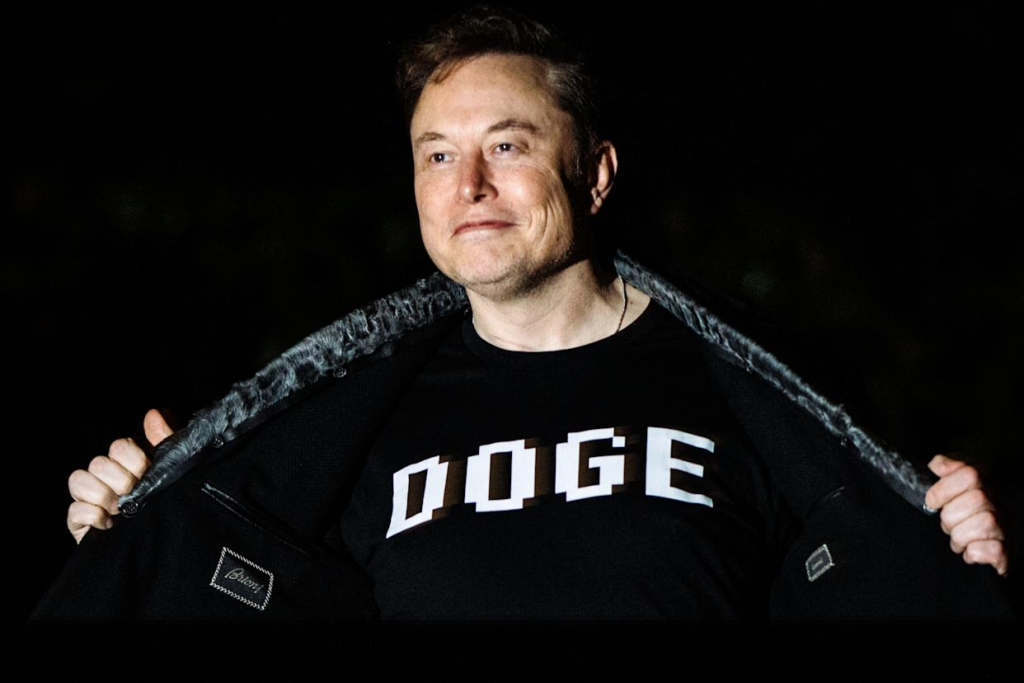
Elon Musk, the billionaire CEO of Tesla and SpaceX, has stepped back from his role leading the Department of Government Efficiency (DOGE), a controversial initiative aimed at slashing U.S. federal spending. Musk claims DOGE saved taxpayers $170 billion, but analysts and critics argue the actual savings are far lower and come with significant hidden costs. As Musk shifts focus back to his businesses, his exit has ignited a heated debate about the true impact of DOGE’s aggressive cost-cutting measures on the U.S. economy and government operations.
The Rise of DOGE: A Bold Promise to Cut Waste
In January 2025, President Donald Trump appointed Musk to head DOGE, a temporary task force created to streamline federal government operations and eliminate wasteful spending. Musk, known for his ambitious goals, initially promised to cut $2 trillion from the federal budget—a figure that represented nearly a third of the $7 trillion spent by the U.S. government in 2024. This bold pledge captured public attention, with supporters praising the potential for a leaner government and critics warning of chaos from rapid, large-scale cuts.
DOGE’s mission was to target inefficiencies, cancel unnecessary contracts, reduce the federal workforce, and eliminate programs deemed fraudulent or wasteful. The initiative’s “wall of receipts” on its website became a public showcase of claimed savings, listing terminated contracts and programs. By April 2025, Musk announced DOGE had saved $160 billion, a number that grew to $170 billion by May, equivalent to roughly $1,056 per taxpayer, according to the DOGE website. Notable cuts included a $3.3 billion program for the Office of Refugee Resettlement and a $3 billion contract for Department of Homeland Security facilities.
Musk’s Exit: A Shift in Focus
Musk’s departure from DOGE, announced in late April 2025, came as his 130-day mandate as a special government employee neared its end. During a cabinet meeting, he stated he would reduce his involvement to one or two days a week, focusing more on Tesla, which reported a 71% profit drop amid market challenges. “The major work of establishing DOGE is done,” Musk said, adding that he would continue advising to prevent waste from “roaring back.” The White House confirmed DOGE’s operations would continue under other leaders, but Musk’s exit has raised questions about the initiative’s future direction and effectiveness.
The Savings Claim: $170 Billion or a Mirage?
DOGE’s claim of $170 billion in savings has been met with skepticism. A Financial Times investigation found that less than half of the reported savings are verifiable, with only 18% tied to itemized cancellations. Many listed contracts had already expired or were misreported, such as an $8 billion Immigration and Customs Enforcement contract that was actually worth $8 million. The New York Times reported similar errors, noting that DOGE inflated savings by counting unspent funds from blanket purchase agreements as full savings, even when little or no money had been spent.
Analysts estimate DOGE’s actual savings may be closer to $15 billion to $100 billion, a fraction of the $1 trillion goal Musk set after revising his initial $2 trillion target. Dominik Lett from the Cato Institute told the Financial Times, “DOGE should not be seen as a very successful deficit reduction effort.” The Treasury Department’s spending data, a more reliable source, shows no significant reduction in overall federal spending, which continues to rise despite DOGE’s efforts.
Hidden Costs: A $135 Billion Price Tag?
Critics argue that DOGE’s aggressive cuts have created substantial costs that offset claimed savings. The Partnership for Public Service, a nonpartisan group, estimated that DOGE’s actions—such as firing tens of thousands of federal workers, rehiring mistakenly terminated employees, and paying for unused leave—could cost taxpayers $135 billion this fiscal year. The Internal Revenue Service (IRS), which lost 22,000 employees due to DOGE cuts, may forego $8.5 billion in revenue in 2026 alone due to reduced tax compliance, according to Yale’s Budget Lab. Over a decade, IRS staff reductions could lead to $323 billion in lost tax revenue.
Legal battles have also added to the costs. DOGE’s rapid firings and agency lockouts have triggered lawsuits challenging its authority, with federal agencies incurring legal fees to defend against these cases. The Government Accountability Office is investigating DOGE’s access to sensitive government data, raising concerns about privacy and potential conflicts of interest, given Musk’s companies hold billions in government contracts.

Public and Political Backlash
DOGE’s approach has stirred significant controversy. A Washington Post-ABC News-Ipsos poll found that 57% of Americans disapprove of Musk’s handling of DOGE, with 60% worried about excessive cuts to federal programs. The initiative’s focus on eliminating agencies like the U.S. Agency for International Development (USAID) and targeting diversity-related contracts has drawn accusations of ideological bias. Veteran Republican budget experts, like Douglas Holtz-Eakin, told Reuters that DOGE’s cuts seem driven more by political ideology than genuine cost-saving efforts, targeting agencies long disliked by conservatives.
Within the Trump administration, tensions have emerged. Treasury Secretary Janet Yellen and Secretary of State Marco Rubio reportedly clashed with DOGE over its lack of understanding of agency missions. Even supporters, like Romina Boccia from the Cato Institute, expressed frustration with DOGE’s “overstated or fake savings,” according to The New York Times.
The Broader Impact: Economic and Social Ripples
DOGE’s cuts have had far-reaching effects. The termination of USAID grants, such as a $1.75 billion program for vaccine access, has disrupted global humanitarian efforts. Federal workforce reductions, including 260,000 firings or buyouts, have caused economic uncertainty for workers and communities. While DOGE claims long-term savings from a leaner workforce, critics argue that hiring contractors to replace federal employees could cost more, negating savings.
Social media, particularly X, has amplified the debate. Posts on X highlight both support for Musk’s efforts to curb government waste and criticism of the economic fallout, with some users calling the $170 billion claim “shaky” and pointing to hidden costs. The Atlantic argued that DOGE was never primarily about saving money but rather about political maneuvering, providing cover for tax cuts and rewarding Trump’s base.
What’s Next for DOGE?
With Musk stepping back, DOGE’s future is uncertain. Originally set to end in 2026, the initiative has been extended to 2028, suggesting ongoing efforts to reshape the federal government. However, without Musk’s high-profile leadership, its momentum may wane. The White House insists DOGE’s work will continue, but analysts question whether it can deliver meaningful savings without causing further disruption.
Musk’s exit also raises questions about accountability. DOGE’s “wall of receipts” has been criticized for lacking transparency, with only 30% to 40% of claimed savings backed by detailed records. The initiative’s reliance on young, inexperienced staff from Musk’s companies has fueled concerns about competence, especially as errors continue to surface.
A Polarizing Legacy
Elon Musk’s brief tenure at DOGE has left a complex legacy. Supporters credit him with exposing government waste and pushing for efficiency, citing examples like the cancellation of a $244 million State Department contract. Critics, however, argue that the initiative’s chaotic approach and inflated claims have done more harm than good, costing taxpayers nearly as much as it saved. As Musk returns to Tesla and SpaceX, the debate over DOGE’s true impact—both its savings and its costs—will likely continue to shape discussions about government spending and reform.
For more details on DOGE’s savings claims, visit The New York Times or Financial Times. For updates on federal budget trends, check CBS News.
Also Read :- Wildfire Risks Rise in California, Prompting Evacuation Alerts in Multiple Counties





